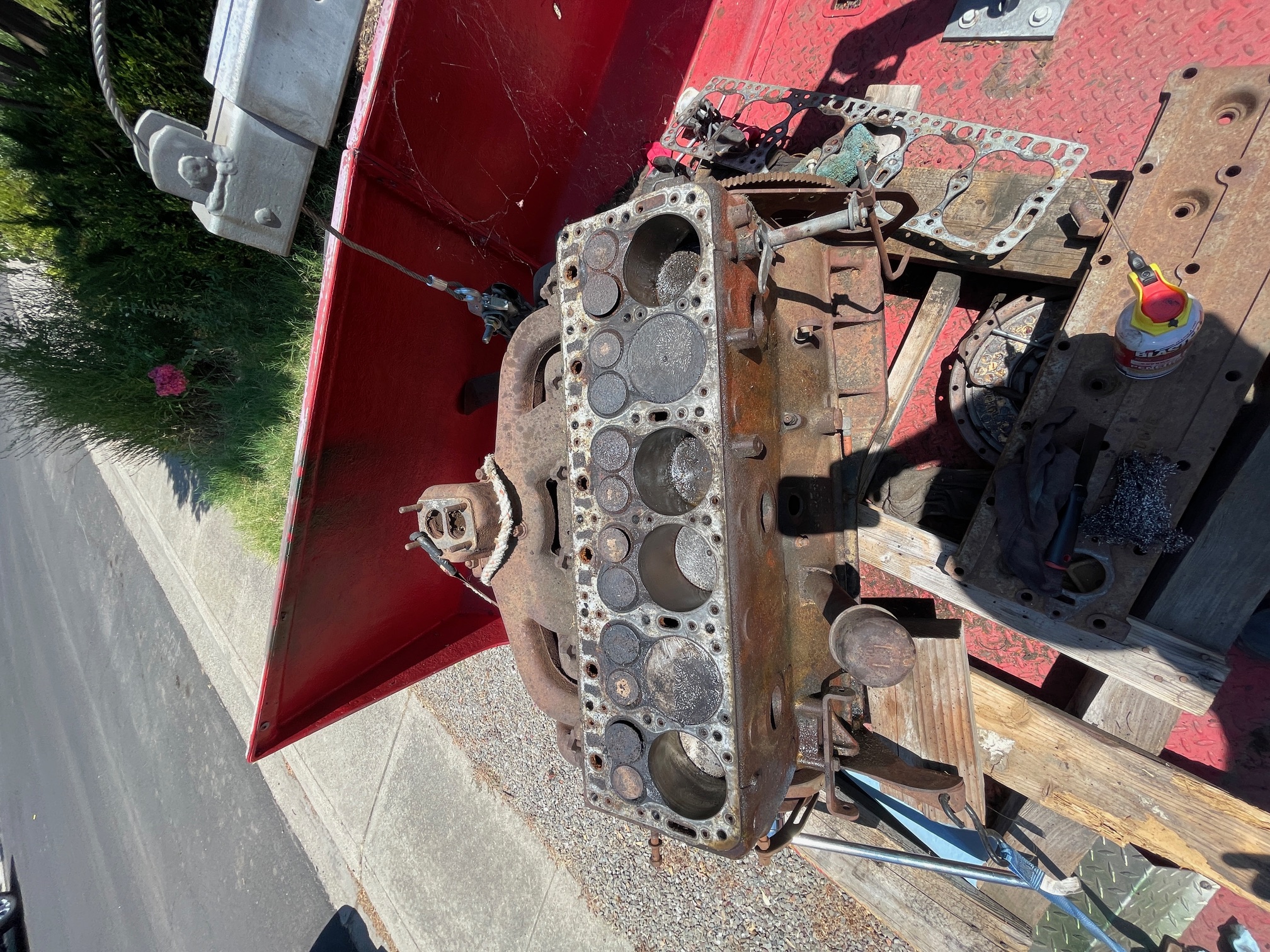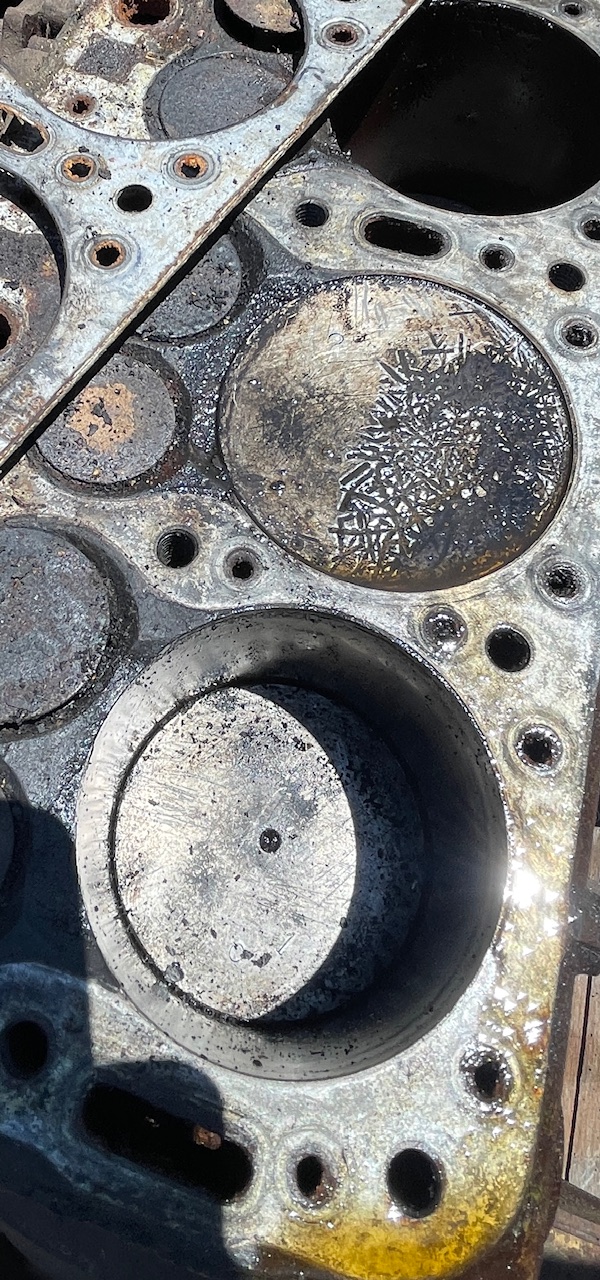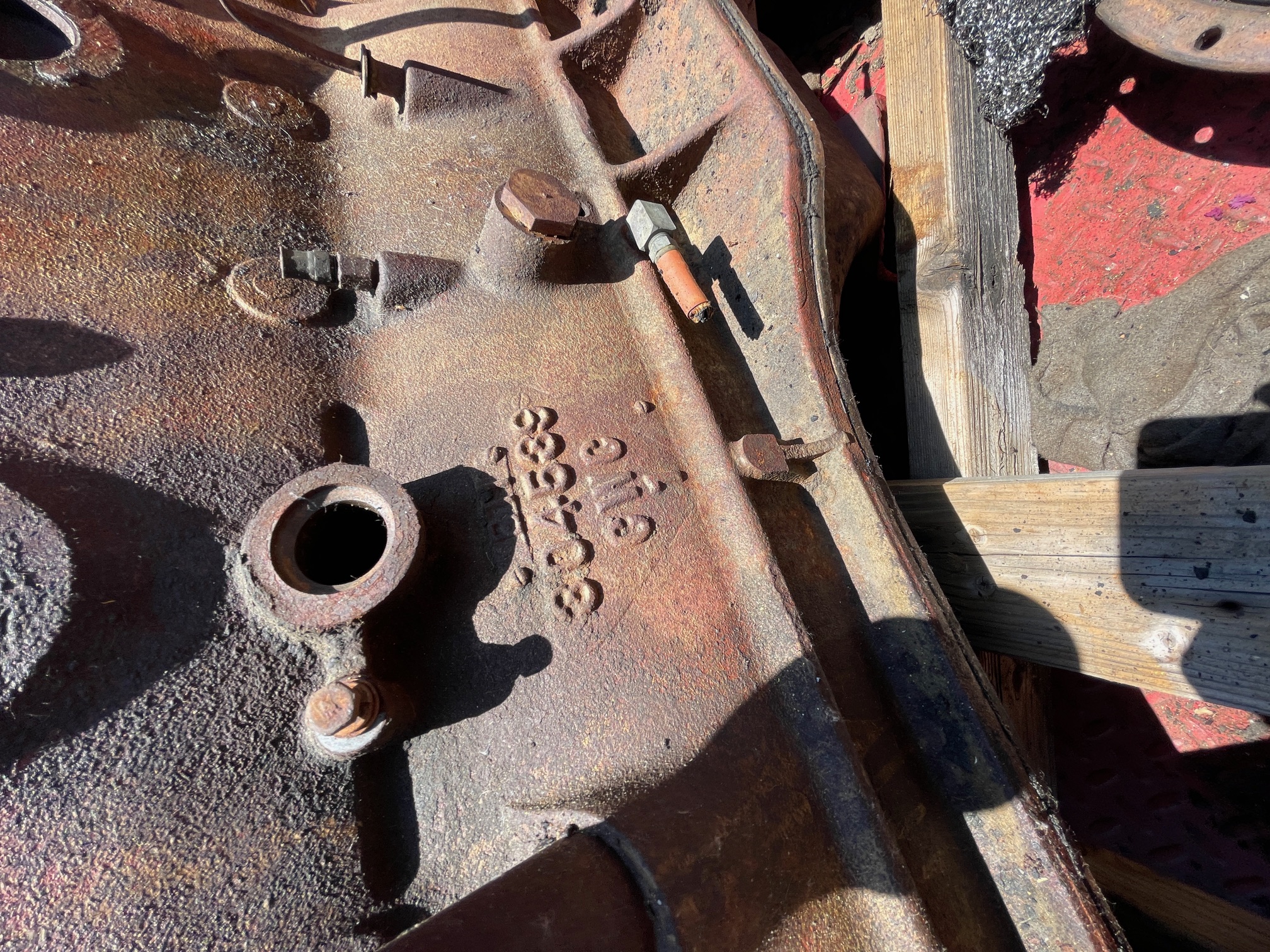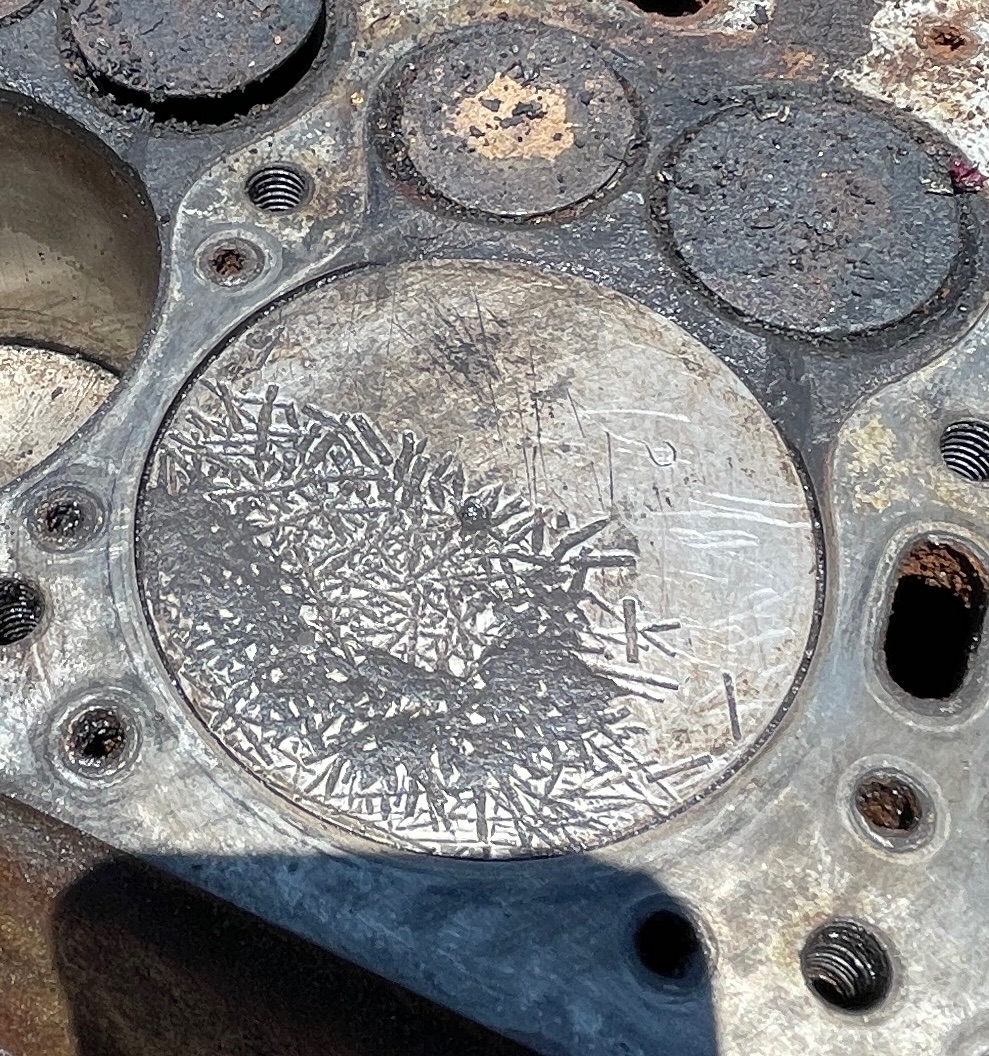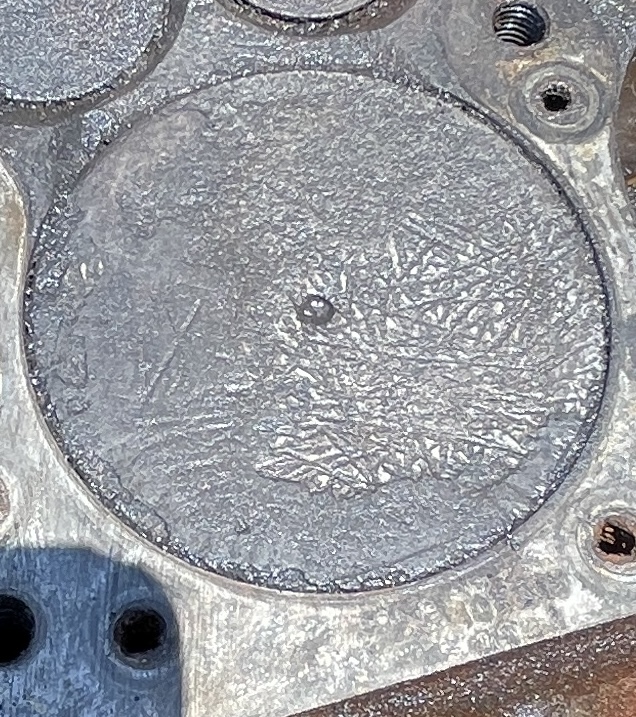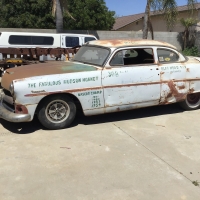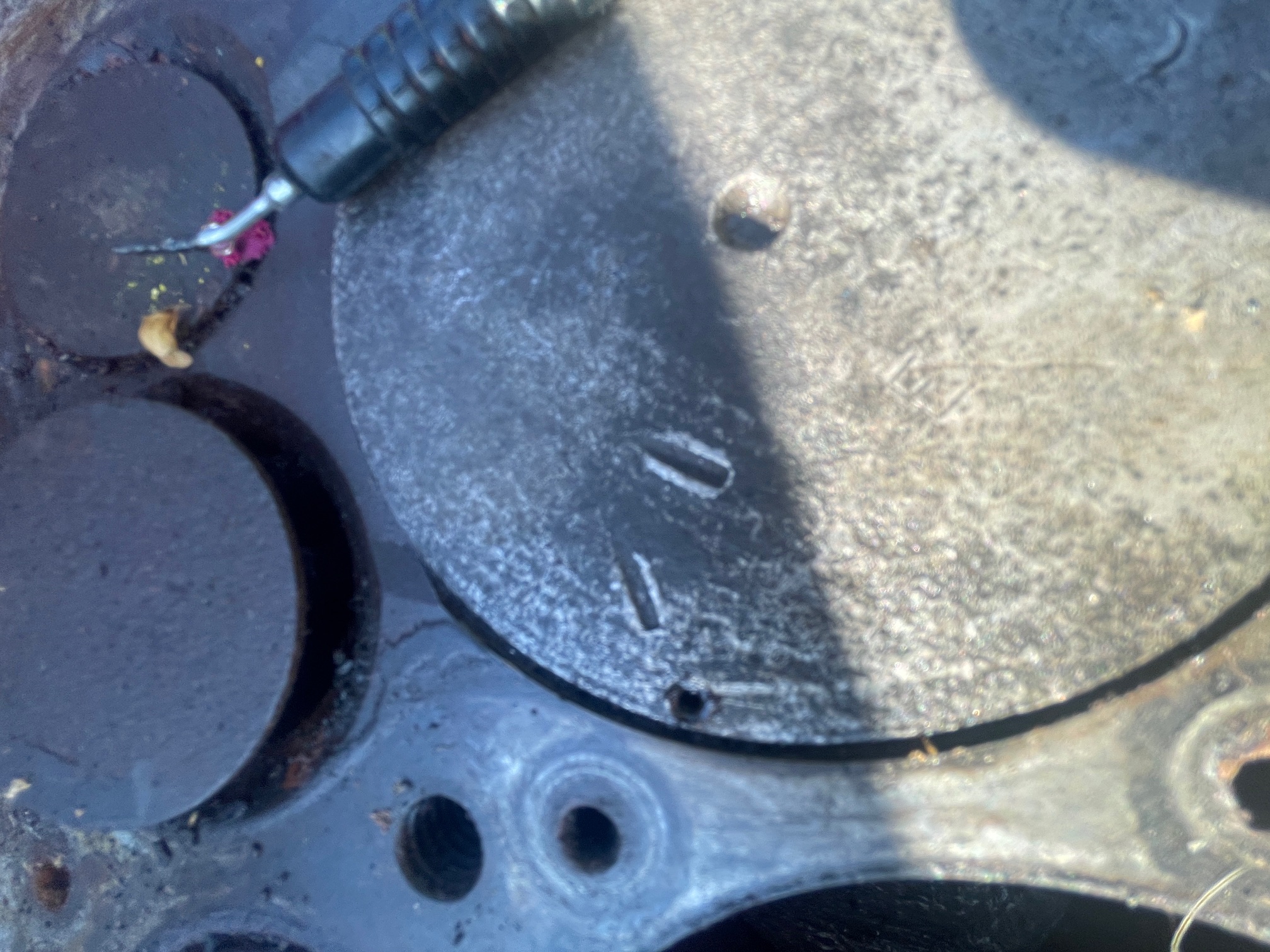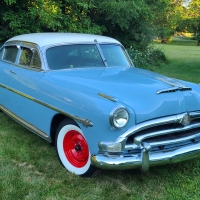Mystery 308ci with Deep Scratched Piston Tops
Recently picked up a complete 308ci + transmission for $500. The owner had bought it back in the '80s as part of a package deal of "dozens of used engines, multiple makes" and had them stored on pallets in a warehouse. He had no history on this 308 the engine. I immediately noticed it a 232 head on it and reckoned it was built for performance (too much compression?). Got it home and removed the head. Take a look at the tops of these pistons:
Piston 1 is the only one without deep scratches (can see stamped code C 1). What caused the deep scratches in pistons 2-6 ? Were these scratches inflicted on the pistons by an overly eager screwdriver attempting to clean old carbon buildup? Or were they made on purpose to help keep the pistons "free" of future accumulation of carbon? I've never seen pistons in this shape. Any thoughts?
Comments
-
I've seen something similar before. In the other cases, the piston ring pin came out and bounced around on top of the piston until it found it's way out the exhaust port.
One of the cases I've seen, the pin bounced around up there until eventually it was standing upright when the piston came up, and it punched a hole in top of the piston.
0 -
What’s the under side of the head look like ?
0 -
Marks look like the right size for ring retainer pin.
0 -
No loose parts in the chambers or marks on the head. I wonder if someone in a fit of desperation had aggressively knocked carbon build up off the tops with a large screw driver and sledge hammer in an effort to reduce detonation? The carelessness of the workmanship is really jaw dropping —some of the grooves are at least 0.150” deep. I still can’t believe it hence why I thought I’d ask if anyone had ever seen such damage across 5 of 6 pistons…?
Maybe all 5 ring retainer pins came loose and eventually blew out the exhaust? No marks on the heads to substantiate that theory. I guess I’ll know more once I pull the pistons…The interesting and a possibly even good news is the is absolute no wear at the top of the holes (no lip). Maybe the engine failed soon after rebuilding, made a terrible racket, and the guy shut it down and put it away…Wishful thinking no doubt but such are “mystery motors.”
0 -
There are no alignment pins in these pistons, (no holes in piston top). so it is either foreign object, or screwdriver marks removing carbon.
0 -
Take a look at this pic ---there indeed is a very small hole in each of the pistons which must be for the ring alignment pin (10 o'clock). This particular piston is missing the pin and the top has sustained impact and indentation (twice from the looks of it). I used the tooth probe to determine if the pins were in place. However, the other 5 pistons still have their pins in place and 4 of those 5 pistons are littered with the indents. Very strange. I cannot imagine one loose pin hopping and tossling around from cylinder to cylinder...Can you?
0 -
Is it possible that the 232 head would cause the sparkplug electrode make contact with the piston, brake off and bounce around in the cylinder.
0 -
Ratlee I've had a piston close the spark plug gap with a 232 head and a high lift (.402) camshaft.
0 -
Well, it has been 52 years since I last saw the same damage to a Hudson piston top. I was at Bernie Siegfried's Liberty Mo garage shop. His tour included showing me an engine that the ring pins had dislodged and damaged the tops of the piston. If you look at the size of the makings you will see the impression of the pin as it was subjected to the continued slapping between the head and the piston top. Bernie showed me how to stake the top of the piston to keep the pin from dislodging. Failures of the piston pin were common enough that mechanics were made aware of means to prevent failures in refreshed engines. Thanks for sharing these pictures.
0 -
You are right - the pin has popped out. I did have this problem with my 202 motor losing the pins. They were earlier model pistons, from a 212 motor. The genuine Jet 202 pistons had the pin on the opposite side to the valves, and these did not give any problems. Less heat, therefore less expansion around the pin hole. However with modern rings the pins are not needed, so if reboring an engine use pistons without pins. If the pin pops out there will be a loss of compression initially, and fumes out the breather, as the holes goes right through and compression will go through the oil bleed holes in the third groove. .Eventually the rings will move around a bit and cover the hole over, and the top part will fill with carbon. When the ring pops out it will cause an alarming clatter for a few seconds until it disappears out the exhast.
0 -
Thanks for the feedback! Based on the fact that I only found one piston with a missing pin, but 5 of the 6 pistons had similarly damaged tops, I have to conclude that someone removed the head after multiple pins had failed, replaced the pins, put the head back on and then either ran the engine again or abandoned it as a lost cause.
Either way I'll rebuild/refresh this engine with new pistons and rings sans pins as Geoff suggests. I believe there's a chance this engine had been been rebuilt only a few thousand miles or less before the pin failures. I can't feel a lip at the top of the bores and the carbon build up isn't excessive (I seen far worse). Furthermore, wouldn't "improperly staked" pins fail early on during the engine break in period (or is my "wishful thinking" bias kicking in again)?
The condition of the crank and rod bearings will be revealing. The valves and seats also merit close attention.
0
Categories
- 36.9K All Categories
- 113 Hudson 1916 - 1929
- 20 Upcoming Events
- 93 Essex Super 6
- 28.6K HUDSON
- 574 "How To" - Skills, mechanical and other wise
- 995 Street Rods
- 151 American Motors
- 180 The Flathead Forum
- 49 Manuals, etc,.
- 78 Hudson 8
- 44 FORUM - Instructions and Tips on using the forum
- 2.8K CLASSIFIEDS
- 608 Vehicles
- 2.2K Parts & Pieces
- 77 Literature & Memorabilia
- Hudson 1916 - 1929 Yahoo Groups Archived Photos
